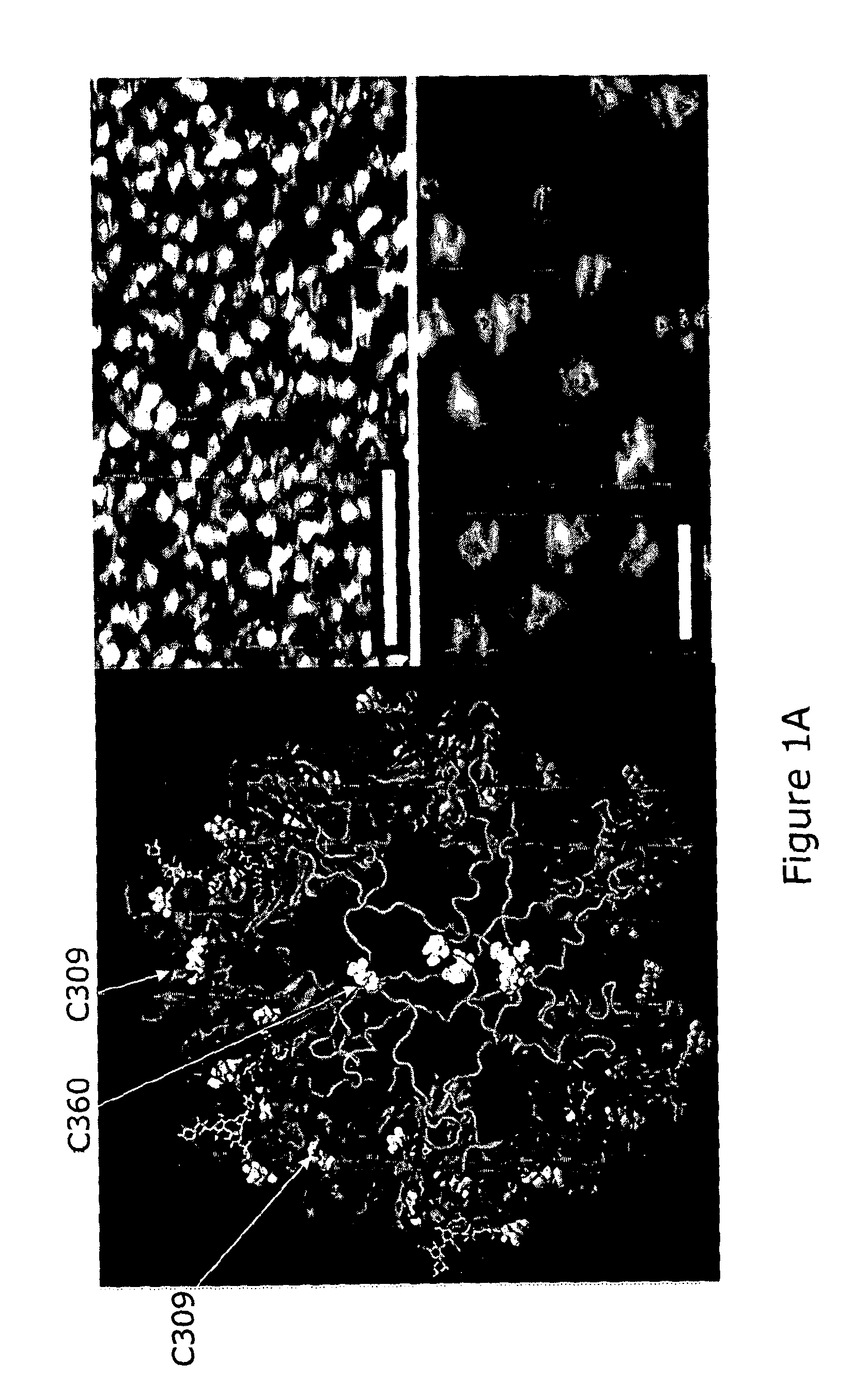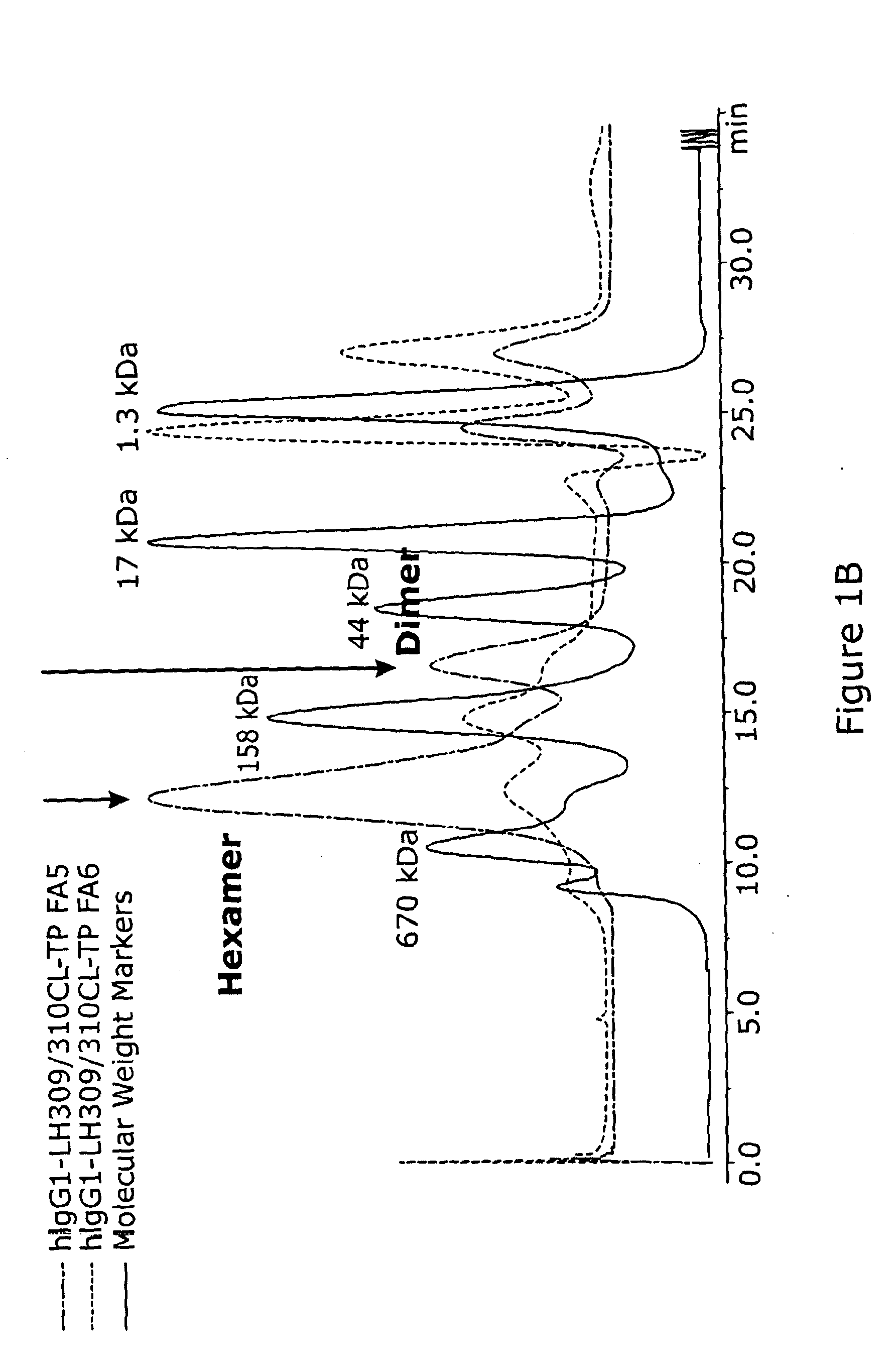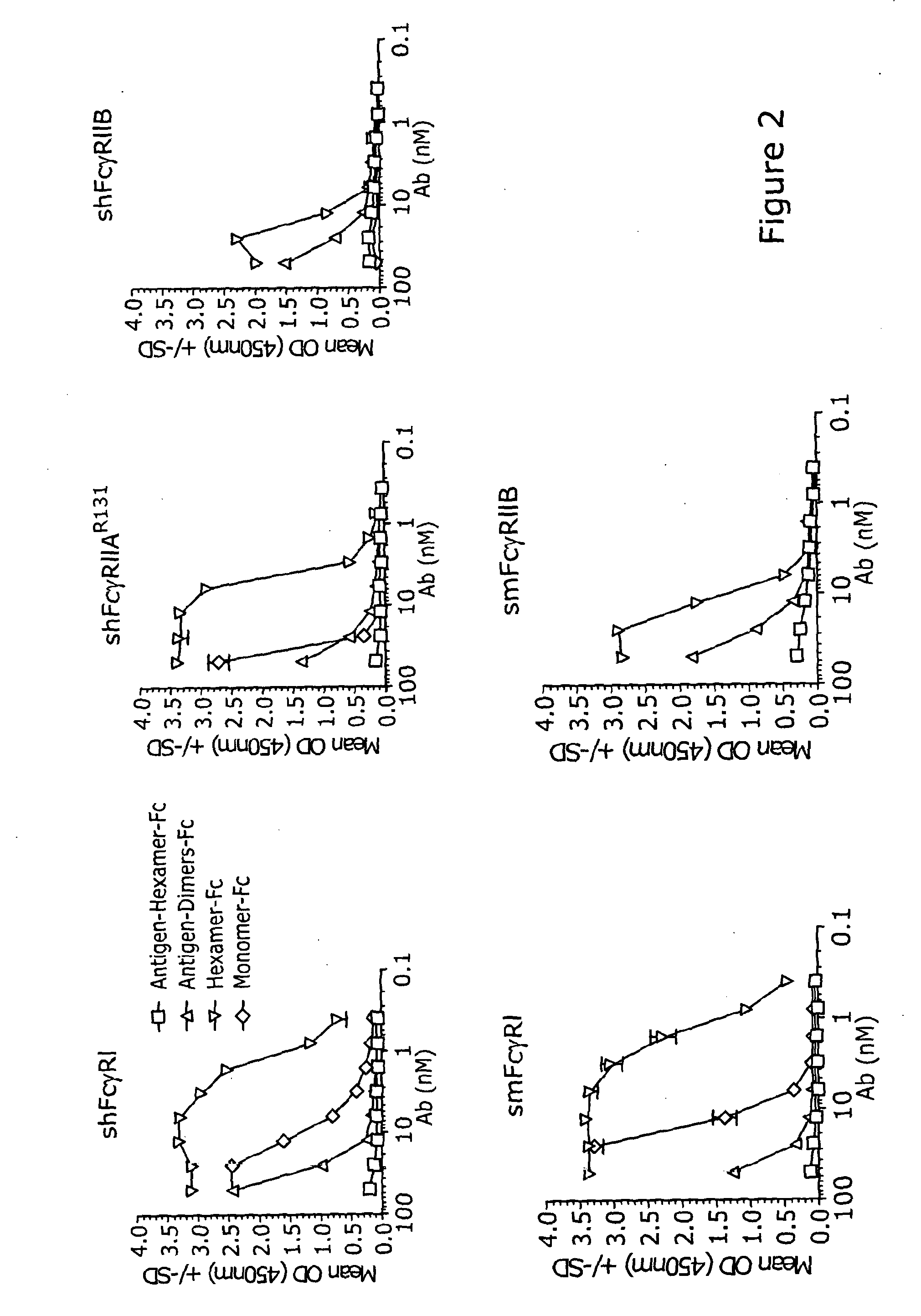Immunomodulatory proteins
a technology of immunomodulatory proteins and proteins, which is applied in the field of immunomodulatory proteins, can solve the problems of insufficient sterility of ivig preparations, high cost, and shortage of ivig,
- Summary
- Abstract
- Description
- Claims
- Application Information
AI Technical Summary
Benefits of technology
Problems solved by technology
Method used
Image
Examples
example 1
Production of a Recombinant Polymeric Fc Protein
[0138]DNA constructs were prepared as follows. A commercially available pFUSE-hIgG1-Fc2 expression vector was obtained from InvivoGen, sourced via Autogen Bioclear, Wiltshire, UK. The expression vector comprises a coding sequence for a signal sequence from IL2 and, downstream of that, a coding sequence for the Fc portion from human IgG1. To generate a polymeric protein, two changes to the coding sequence of the human IgG1 Fc-portion were made. The 18 amino-acid tailpiece from IgM was sub-cloned onto the C-terminus of the Fc portion, and an additional mutation was made in the Cγ3 domain to convert residues 309 and 310 (EU numbering throughout) to cysteine and leucine respectively.
[0139]In order to insert the IgM tailpiece sequence into the commercially available vector, primers were designed which would, when annealed together, form a double stranded sequence with overhanging bases encoding a Nhe1 restriction site to allow subcloning C-...
example 2
Structural Characterisation of a Recombinant Polymeric Fc Protein
[0151]Hexameric-Fc were imaged by tapping mode atomic force microscopy (AFM) under solution. Hexameric-Fc form a highly uniform population of well defined structures. The obtained AFM images showed the complex to be cylindrical in structure (18±2 nm (n=51) in diameter, 5.7±0.4 nm (n=54) in height). Representative images are shown in FIG. 1A. The obtained images are also consistent with dimensions predicted from in silico modelling analysis, also illustrated in FIG. 1A.
[0152]AFM was performed as follows, and as described in Mekhaiel et al, 2011a. Stock solutions of hIgG1-Fc-LH309 / 310CL-TP in 1×HBSS buffer were diluted to 10 μgml−1 in 0.2×HBSS buffer and then directly applied to a freshly cleaved fragment of muscovite mica. After incubating for 20 minutes, the sample was rinsed extensively with 0.2×HBSS buffer to remove unadsorbed molecules. The samples were always under solution during transport to and imaging within th...
example 3
Interaction of a Polymeric Fc Protein with Components of the Immune System
[0154]1. Interactions with Fc-Receptors
[0155]Hexameric Fc bound to all of the Fc receptors tested, namely human FcγRI, FcγRIIA and FcγRIIB, and mouse FcγRI and FcγRIIB. The hexameric-Fc bound with higher affinity (in the nanomolar range) to the low affinity human FcγRs (FcγRIIAR131 and FcγRIIB) than dimers or monomers that bind to the same receptors in the micromolar range. This confirms that higher order polymers do have improved binding kinetics to receptors known to be involved in protecting from ITP. In SPR analysis, Hexameric-Fc bound to the human FcγRI with a KA (1 / M) of 1.6×1010. Dimers bound with a KA (1 / M) of 6.4×109. Binding of hexameric or monomeric Fc to Fc receptors by ELISA is shown in FIG. 2.
[0156]Another receptor that may play a role in ITP is FcγRIII (Park-Min et al, 2007). Hexameric-Fc can be expected to bind human FcγRIII because the binding site for FcγRIII on IgG overlaps with that of FcγR...
PUM
| Property | Measurement | Unit |
|---|---|---|
| diameter | aaaaa | aaaaa |
| diameter | aaaaa | aaaaa |
| pH | aaaaa | aaaaa |
Abstract
Description
Claims
Application Information
 Login to View More
Login to View More - R&D
- Intellectual Property
- Life Sciences
- Materials
- Tech Scout
- Unparalleled Data Quality
- Higher Quality Content
- 60% Fewer Hallucinations
Browse by: Latest US Patents, China's latest patents, Technical Efficacy Thesaurus, Application Domain, Technology Topic, Popular Technical Reports.
© 2025 PatSnap. All rights reserved.Legal|Privacy policy|Modern Slavery Act Transparency Statement|Sitemap|About US| Contact US: help@patsnap.com



